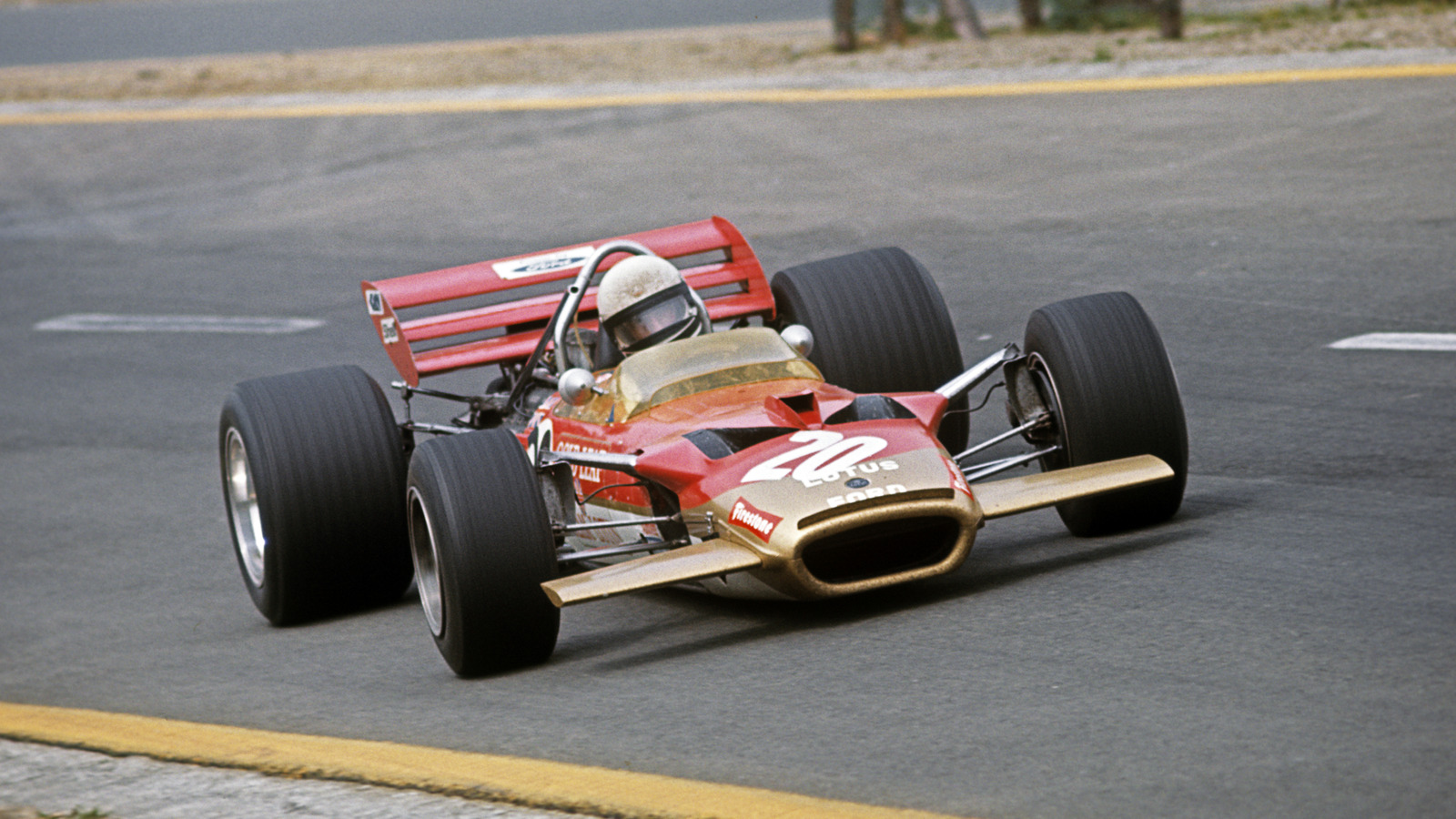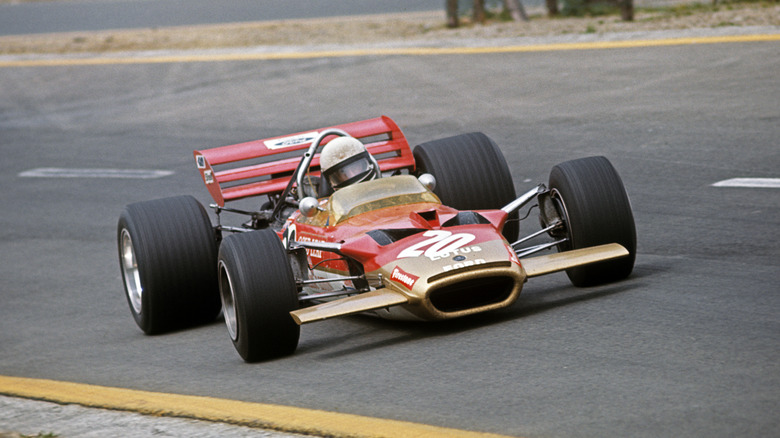Dirty air was one of the prominent talking points after last weekend’s lackluster Japanese Grand Prix. The subject isn’t anything new for Formula 1 fans, as aerodynamic wake has severely hampered passing during races for at least the last 25 years, but even before that downforce-creating aerodynamics has been a hot point in the sport. One notable F1 figure was vocally against engineers affixing wings to cars during the late 1960s. Jochen Rindt, the 1970 F1 World Drivers’ Champion, believed that wings were so dangerous and detrimental to racing that they should have been banned. Looking back from 56 years in the future, everyone ignored all the issues he raised at the time that are still problems today.
Rindt shared his concern in an open letter that was published in the May 23, 1969 issue of Autosport, and the British racing publication republished the letter on its website on Wednesday. The Austrian driver realized every team would adopt wings after the winged Lotus 49B contested the 1968 French Grand Prix. Rindt wrote:
“Suddenly everybody got the message about what could be done with the help of the air; but unfortunately nobody directly concerned gave much thought to what could happen if the wings went wrong, and what effect they would have on the racing.”
The dangers of downforce didn’t deter Rindt
Rindt knew that wing failures would be an issue earlier but would eventually be solved in time. However, the violent and sudden nature of the high-speed crashes concerned him. Rindt raised his crash at the 1969 Spanish Grand Prix as the perfect example, when his wing on his Lotus 49B failed at speed in the middle of a high-speed corner. The car lifted off the racing surface then slammed into the street circuit’s trackside barrier and Graham Hill’s recovered car. Hill’s Lotus had also crashed with a similar wing failure.
During the late 1960s, Rindt was arguably the sport’s hottest commodity. The Austrian won both Britain and France’s national F2 championships in 1967, winning six out of nine races in his double-title campaign. He chose to race for Brabham in 1968 but jumped ship to Lotus the following in pursuit of a car fast enough to win the world championship. Rindt was also aware of the danger of racing for designer-team boss Colin Chapman, infamously stating, “at Lotus, I can either be world champion or die.”
Formula 1’s organizers could never stomach a decrease in speed
Rindt’s comment was prophetic after he won the 1970 F1 title posthumously. He was killed in a crash at Monza during a practice session for the 1970 Italian Grand Prix. The shaft for the Lotus’ inboard front-right failed as he drove into Parabolica. The gruesome incident saw Rindt’s car spear into the barrier and his throat slit by his five-point harness. Rindt purposely didn’t buckle his crotch belt and slid under the harness on impact. After winning five of the season’s nine completed rounds, the Austrian scored 45 points and had a 20-point lead. Over the four remaining races, no driver scored enough points to close the gap.
The portion of Rindt’s open letter that seems more relevant than ever is the section about dirty air. The Austrian noted the turbulence caused by following a winged car. He quickly realized that a driver in a slower car could keep a faster car behind through dirty alone. Rindt correctly pointed out that it would prevent the close racing that fans enjoyed. It’s fair to say that he underestimated how fans would become zealously addicted to the sheer speed. The public backlash against a decrease in speed to improve the quality of racing would be impossible for any governing body to stomach.





